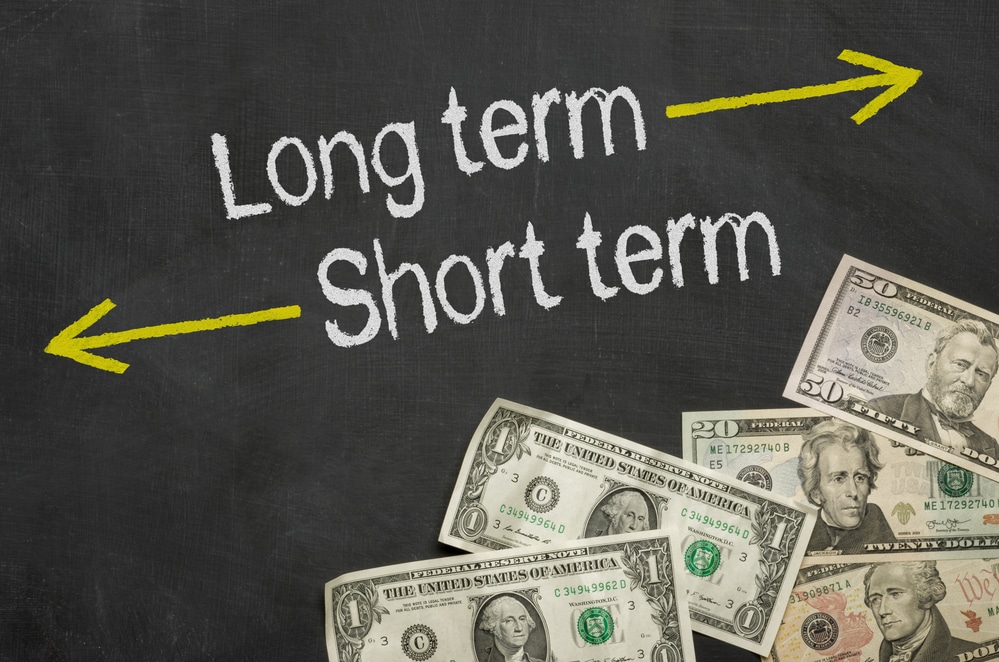Short-term trading is a process to make money from a lower time frame, while long-term is similar to an investment. In terms of profitability, short-term trading has a higher number of losing trades than long-term trading. On the other hand, long-term trade is riskier.
Most beginners think of buying and selling stocks or assets and making a certain amount of money or having a quick profit. However, being successful, traders require an amount of experience, research, and practice.
Any financial instrument is one way to approach investing, but it is not the only way. Traders generally make money by buying and selling financial instruments by following trends. Some traders like quick profits, while some like to hold the trade and take the maximum benefit from the price movement.
But which one is more profitable?
Both types of trading have pros & cons. This article will differentiate two types of investment and give our thoughts about which one is best.
Short-term investment: assets & participants
In the financial market short-term investment time duration limit is a year or less than that. As a result, most participants hold their investment for several months and seek to profit off short-term gains and asset price volatility.
The short-term trading assets have a short lifetime, typically up to three years, such as:
- Gilt funds
- Treasury bills
- Low duration debt funds
- Bank fixed deposits
- Company fixed deposits
Although lower time frame trading is applicable on any investment asset, including forex, stock, and cryptocurrencies, short-term investment assets are often volatile. This is because the price moves quickly as the traders can make profits within a defined period.
They also are highly liquid; thus, the investors can sell the asset rapidly at any time. However, the quick decision change requires a lot of attention to the price chart and virtual event that often makes trading hard.
Anyways, active participants and day traders often hold short-term investments. Therefore, trading in a lower time frame doesn’t mean closing all trades within a session.
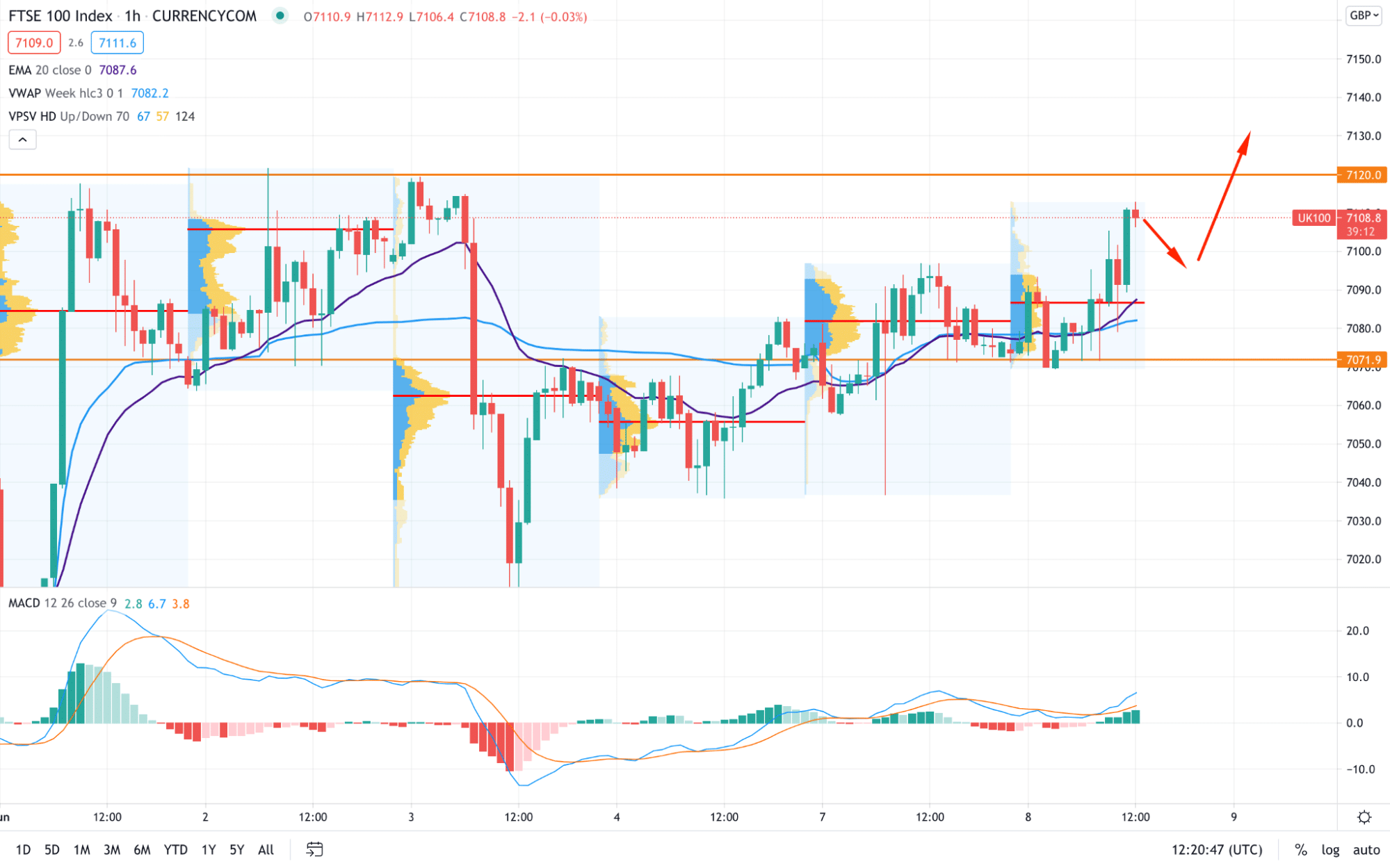
In the above image, we can see a buying possibility in the UK FTSE 100 H1 chart, where buying and selling decisions are based on short-term trading.
Long-term investment: assets & participants
We already mentioned the time duration for long-term trading/investment, in which traders hold positions on the asset for one or several years, maybe decades. The long-term investors determine the profit or the rate of return is acceptable to them. Investments such as stocks, equity mutual funds, college funds, retirement funds, etc., are long-term investment asset types. Any short-term trading asset can be a long-term trading asset.
Most of the time, long-term investment gains slowly but predictably by making them a better asset to hold for several years.
One of the best examples of long-term investment is in real estate. People buy homes as an investment that they will hold for years, maybe decades. The process of buying and selling homes makes the investment liquid but difficult to count as a short-term trading asset. Long-term trading assets tend to seek long-term growth, not often traded as short-term investments.
Another example of this type of investment is a cryptocurrency where people can gain up to 500% profit in a year.
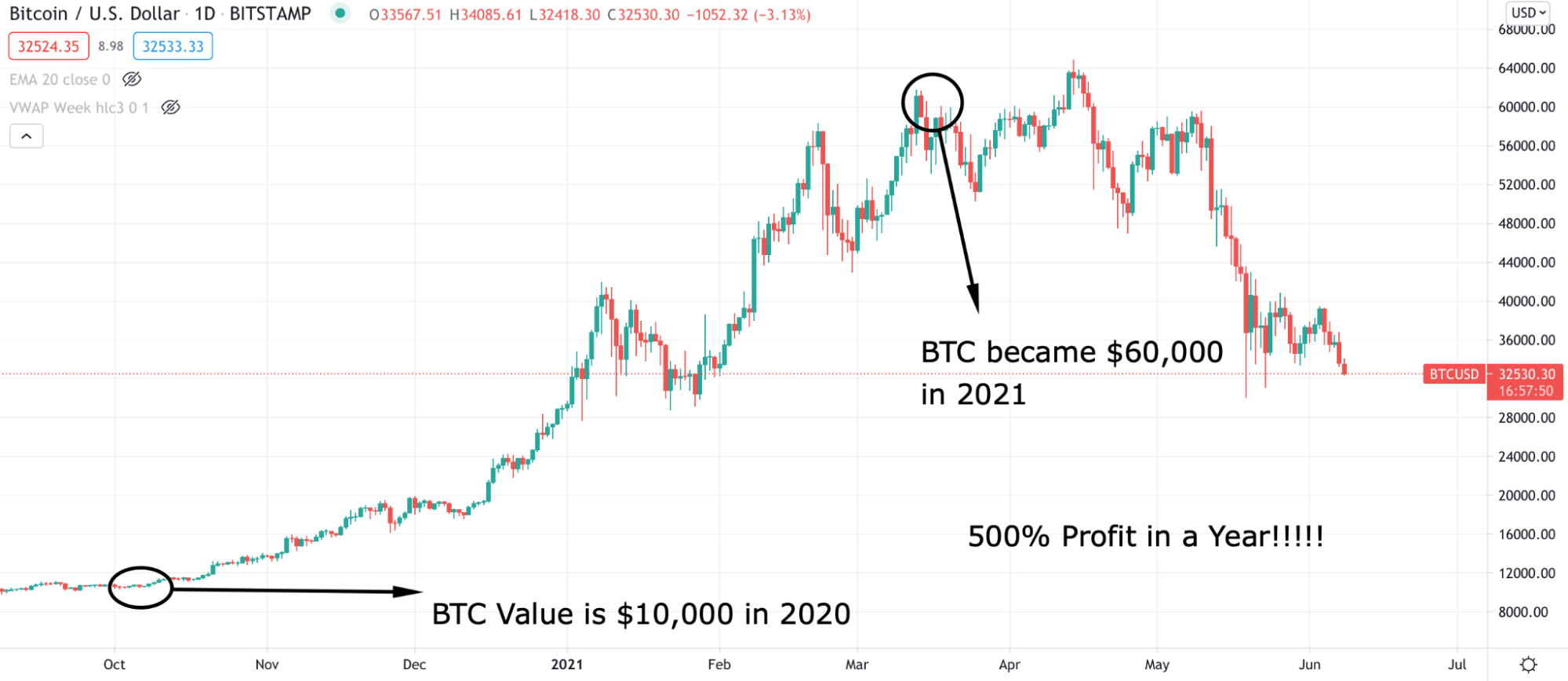
Strategic differences: lower time frame vs. higher time frame trading
These two types of trading have a different role which appears in their portfolio. However, it’s not always easy to find a stable strategy that suits your trading style. Investment in trading always involves time in terms of return and risk factors. Let’s discuss common strategic differences between short & long trading.
Smaller movements
Short-term trading is more likely to seek assets that may gain or lose value in the immediate future. What does it mean? There is no specific time frame for this. It could be minutes, hours, or even days.
So it’s pronounced that investors of these assets look for smaller movements than the long-term traders. Lower time frame traders want to make money from smaller gains from price swings. In the meantime, long-term trading involves investors looking at the assets’ long-term outlook.
Additionally, it’s widespread that day traders hold positions for a couple of hours on high volatile assets that may make a sudden/swing price movement.
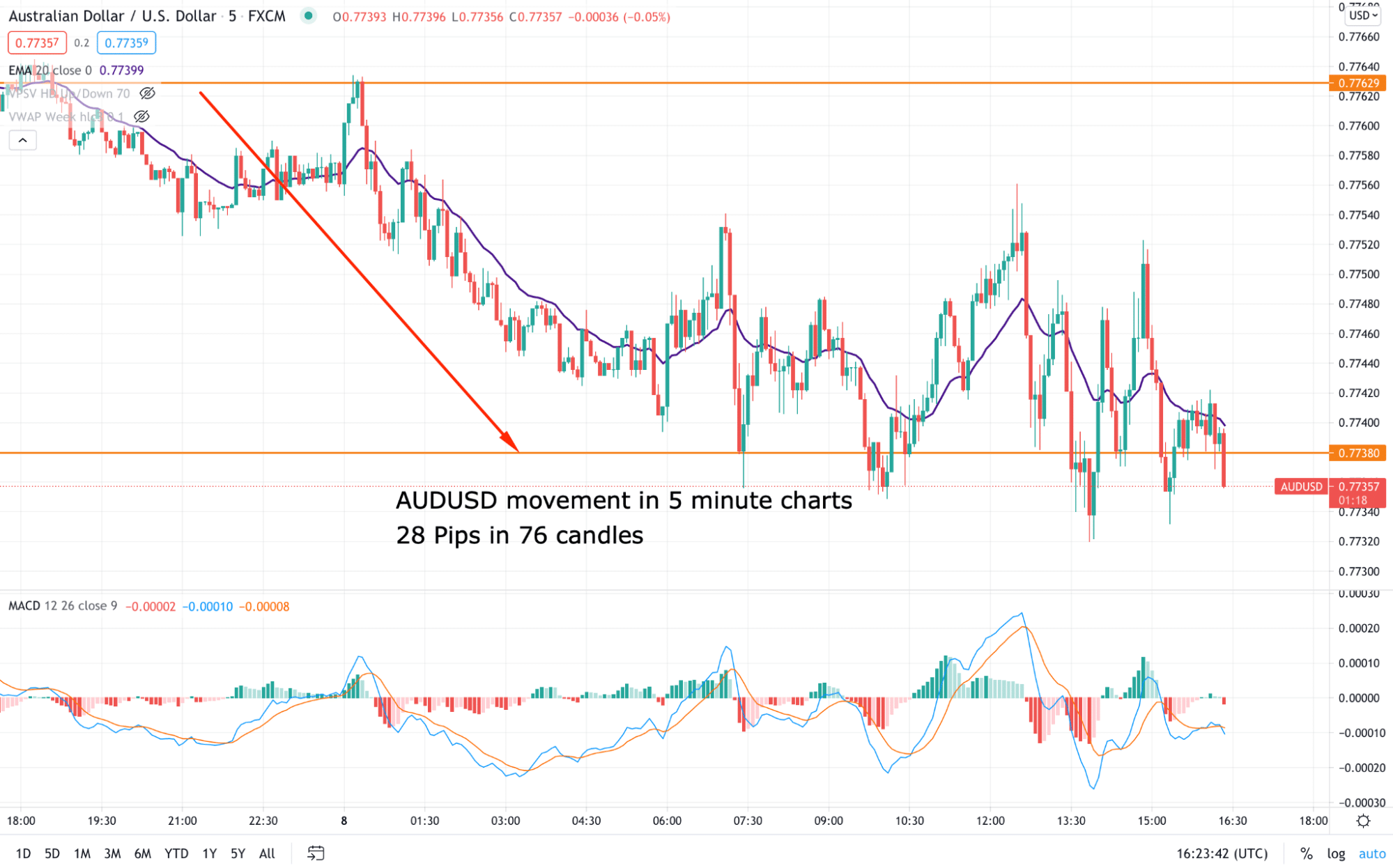
Here we can see the five minutes chart of AUD/USD where the price made 28 pips movement in 76 candles. Now move to the daily chart.
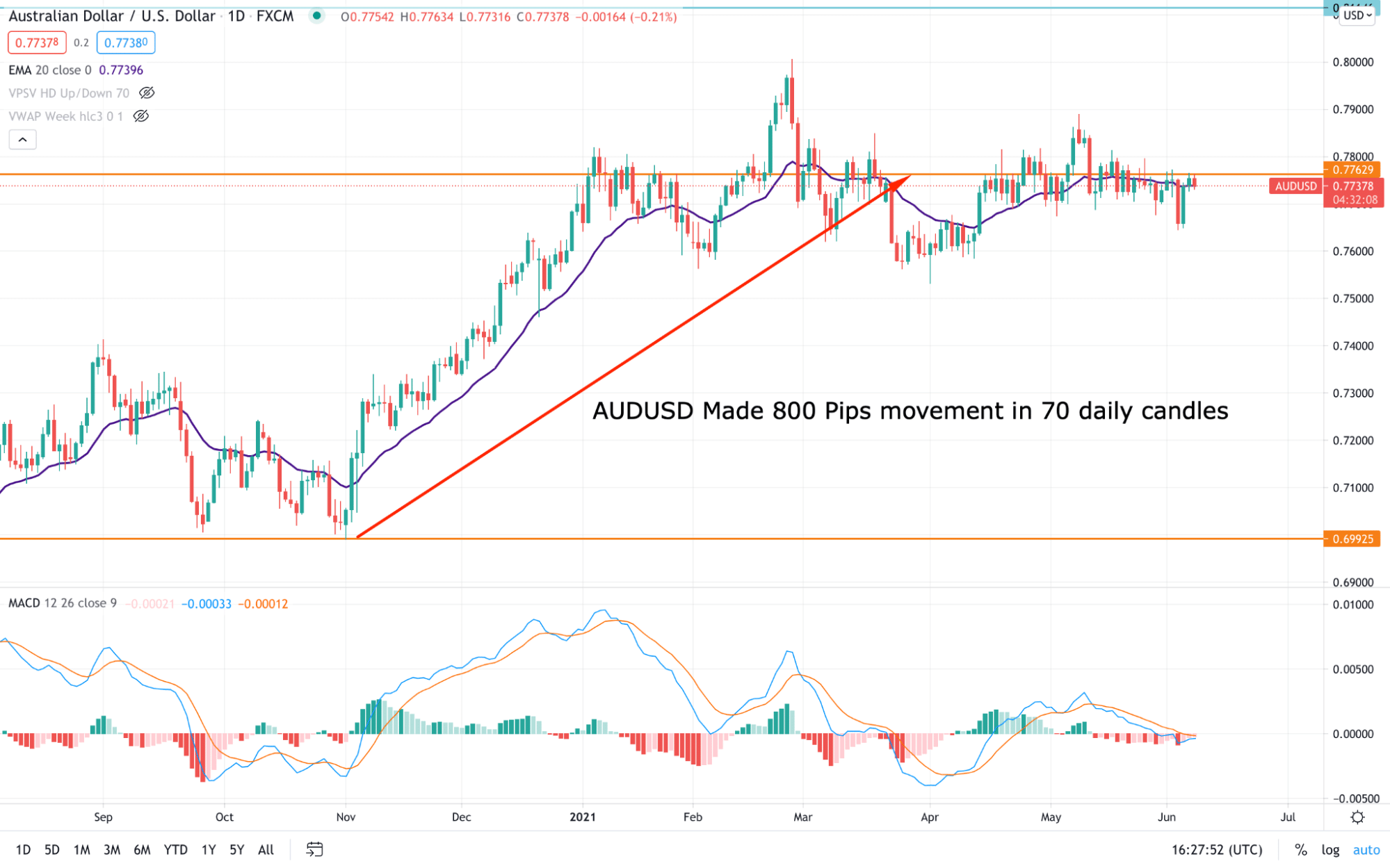
Did you see how the price moved so fast in AUD/USD? It provides more than 800 pips from a single swing, which is impossible in the lower time frame.
Active vs. passive investment
Short-term investors are active traders who hold positions and manage trades more often than their colleagues, who like making a profit on the long-term market movements. Long-term trading involves taking stakes on any asset and holding it for a more extended period. So the long-term investors are less active in trading or have a passive investing interest.
- Volatility
These two types of trading are different based on volatility. Long-term trading assets are less volatile than short-term trading ones.
- Aggressiveness
The long-term traders are more aggressive than the short-term ones as they can afford losses. They hold positions in a particular asset for several years to recover any lost value. Although long-term investing has enough time to recover, it is riskier than short-term assets by measuring this scale of aggressiveness.
- The smooth and immediate goal
Short-term traders have an immediate goal to achieve profit. Meanwhile, long-term traders have a smoother and longer goal than short-term traders. For example, professional traders may hold a position for a couple of days, weeks, or several months. That invested asset may add some value in the immediate future that increases their vacation fund or maybe a more excellent car by the end of the year.
On the other hand, a retirement fund is a typical example of long-term investments. People usually invest in something that has an acceptable return over a long period. So the goal is smooth for long-term traders and not closing by the end of the year. Investors hold positions for several years or maybe decades to achieve a longer-term goal.
Which one is more profitable?
Suppose you ask which one is better between long-term or short-term trading. There is no straight answer. Both have advantages and disadvantages. The short-term investment allows you to gain quick money with less risk and within a short span when the long-term investment involves higher risk but more significant return than the short-term investments.
If you want to get a return from your investment within a short time, you may choose short-term trading.
It perfectly suits traders who are available to trade at least two trading sessions per day. Individual traders often perform lower time frame trading as most of their strategies are short-term strategies. However, the list of long-term traders is also huge as people want a safe and huge return by having less trading activity.
Conclusion
Online trading makes trading quick, more straightforward, convenient, and hassle-free. However, always remember to open an account with a trusted financial partner who can provide different trading assets on a single platform.
